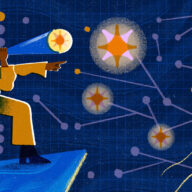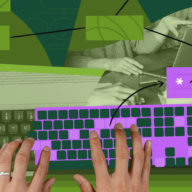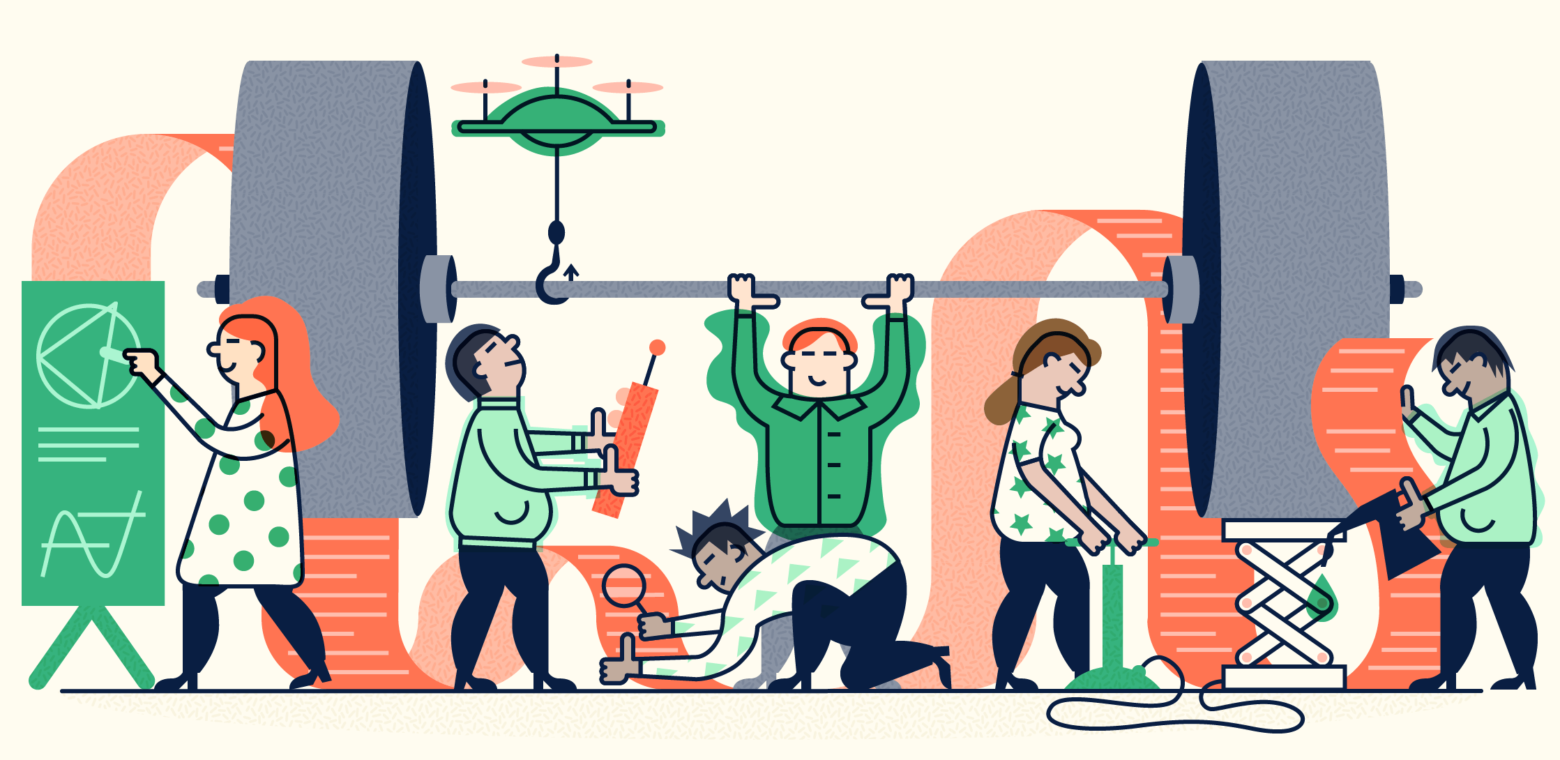There’s nothing like a crisis for bringing multi-disciplinary groups of people together. Consider the case of the 33 Chilean miners who found themselves trapped 700 meters below ground after a collapse near their worksite in 2010. A crack team of specialists from the mining company, the Chilean government, the Chilean Navy, geological organizations around the globe, and even NASA assembled virtually overnight. They worked around the clock for over two months until every miner was back above ground and reunited with their family.
Fortunately, when most of us engage in cross-disciplinary work the stakes aren’t nearly so high. But according to Dr. Amy Edmondson, Novartis Professor of Leadership and Management at Harvard Business School and co-author of the book “Extreme Teaming,” many of the factors that led to the rescue operation’s success also play a role in the success of every-day workplace teams.
- The rescue team had a clear mission with adaptable success measures (bring the miners up alive, or failing that, deliver their bodies to the families).
- They had the right expertise and the autonomy to do their jobs the best way they knew how.
- And perhaps most importantly, they shared mental models of the timeline for their work (ASAP), their priorities (human lives over monetary or ecological cost), and how the contributions of each expert fit into the operation as a whole.
Shared mental models go a long way toward taking the friction out of cross-functional collaboration. But they don’t “just happen.” They have to be cultivated, much like societal norms.
If that sounds like boring busy-work or management mumbo-jumbo, take heart. Building shared mental models with your team is demonstrably worthwhile and you can do it in a way that moves your project work forward at the same time. You might even have fun.
So what are shared mental models, exactly?
Mental models are internal representations that allow us to interact effectively with the world. Unlike cultural norms, which guide our behavior in a because-I-said-so kind of way, mental models have an if/then component. For example, my mental model of pine trees says that if I lean back against one, then I will get sap stuck in my hair.
Shared mental models are “shared causal beliefs,” as Dr. Edmondson describes them, that help us interact with each other. In other words, they’re about being on the same page. We see them in action every time we do a favor for someone: if I help you today, I can reasonably expect that you’ll help me in the future.
Shared mental models are essentially about being on the same page.
Within the context of teamwork, shared mental models revolve around the roles and responsibilities of team members, the flow of information, and how they interact with each other based on each member’s skills and preferences. The common understanding and mutual predictability that comes from having shared mental models help teams collaborate smoothly.
How shared metal models affect team performance
Stop me if you’ve heard this one before. An engineer finishes building a piece of software. They then pass it over to a network admin who runs into a number of problems deploying it, but eventually gets it up and running. Relieved, the network admin then tells a marketer that the software is ready to be sold. The marketer looks at the software and says “Wait: I can’t sell this for reasons X, Y, and Z. You need to go build something different.” And the cycle repeats. Because each person has their own mental model of what “good” looks like, the project’s timeline drags on while the team misses out on other opportunities.
Shared mental models can also affect the “what” as much as they affect the “when.” Legend has it that Sir Alec Issigonis, the British car designer who came up with the Mini, once quipped that a camel is a horse designed by committee. (We’ll ignore the fact that camels are actually supremely adapted to their natural environment. His point is still valid.) When a group of people from different disciplines create something together – and don’t have the benefit of shared mental models – the product often lacks a clear purpose or just seems a bit … off.
By contrast, when team members share an understanding of what they’re optimizing for, they can make good decisions that they won’t second-guess a day later. They’ll also generate a more robust set of options to choose from. When people make a point to trade expertise, they can then contribute meaningful ideas informed by the group’s collective knowledge, which leads to more creative solutions.
“Oftentimes people go into decision-making with a mindset of choosing among two already obvious alternatives like go vs. no-go,” Dr. Edmondson notes. “But walking through how I think about the situation and what evidence I’m drawing on means we’re sharing not just a high-level perspective, but the granular details of how we got there.”
Furthermore, shared mental models improve team harmony. As Dr. Edmondson points out, “Coming together across disciplines leaves a lot of space where we can get frustrated with each other over things we’re just not aware of.” The more teammates get on the same page, the more that space shrinks.
So what’s a well-meaning cross-functional team to do? Talk to each other. The sooner, the better.
Dr. Edmondson explains it in terms that should sound familiar to anyone using agile practices. “The idea is, ‘Wait a minute: what if engineering and manufacturing and marketing all sat around a table at the beginning? Might there not be some real insight gains that would help the project?’“ The answer, of course, is yes.
It’s not that everybody needs to be experts in each other’s fields. But where one person’s work touches the work of someone from a different discipline, they should build a shared mental model that helps them understand and work within that interface.
This won’t happen automatically, however. Teams have to intentionally teach and learn from each other. That means assuming the people around you aren’t idiots just because they don’t know even the most basic tricks of your trade, and explaining things in a way that someone from a different discipline can grasp.
3 essential shared mental models for cross-functional teams
Whether you’re a nutritionist working at an insurance company or a metallurgist working in manufacturing, the problems you’re tasked with solving are increasingly complex. In fact, 90% of organizations say they rely on multi-disciplinary project teams to get work done. No matter what type of project you’re embarking on, take the time to cultivate these three all-purpose shared mental models so your team can live up to its full potential.
Tip
Find complete step-by-step instructions for each recommended exercise (also called “Plays”) using the links below. Or, browse our full collection in the Atlassian Team Playbook and find the Plays that suit your team. It’s all free, with no registration required.
Team health
Start with the basics. Build a shared mental model of what working well together as a team looks (and feels) like using the Team Health Monitor technique. Think of this exercise as equal parts project-status meeting and group therapy session. You’ll ask yourselves questions like “Do we have a shared understanding of the project’s value and goals? Are we managing dependencies effectively? Are we incorporating what we learn today into tomorrow’s plans?”
Each question is designed to surface nascent issues that team members might not be able to see from their particular vantage point. From there, you can take action before issues become blockers.
This technique also lays the groundwork for building additional shared mental models. “People often fear exposing their ignorance in front of experts from a different domain,” Dr. Edmondson explains. “What is obvious to people in one field may be mysterious to those in another, increasing the chances that a reasonable question will come across as a stupid one.” Because the Team Health Monitor encourages participants to share openly and be a bit vulnerable, they walk away feeling more connected and less shy about asking “dumb” questions about each other’s work.
Note: the Team Health Monitor assumes your team has already been working together for at least a few weeks. If your team is just forming, try the Working Agreements exercise to establish models for things like communication and decision-making.
Who does what (and when)
The operative if/then statement here is “If we all play our positions, then we’ll be able to deliver quality work on time and still be on speaking terms at the end of the project.” The thing is, team members are likely to have different notions of what everybody’s position is. That’s where a Roles and Responsibilities workshop comes in.
This one-hour investment pays off by clarifying why each person is on the team and what is expected of them. With a shared mental model around roles and responsibilities, your team can avoid dropped balls and duplicated effort.
What “good” looks like
As we saw in the software example above, conflicting definitions of success lead to do-overs, mistakes, and ultimately, inferior results. Two exercises can help with that.
First, the Trade-offs technique will get everyone on the same page regarding what to optimize for, how rigid to be about it, and what concessions might be involved. Going back to the story of the Chilean miners, everyone on the rescue team understood they needed to optimize for speed and the safety of the miners – even if that meant spending a lot of money or damaging the landscape in the process. That allowed team members to make most decisions autonomously and make progress faster.
Next, try a Goals, Signals, and Measures workshop. As the name implies, this exercise results in a shared definition of success and teases out the signals that indicate you’re on the right track.
Try a few of these exercises with your team and experience first-hand the difference shared mental models can make. Even if you’re not saving lives, you’ll save yourselves a whole lot of headaches.







































